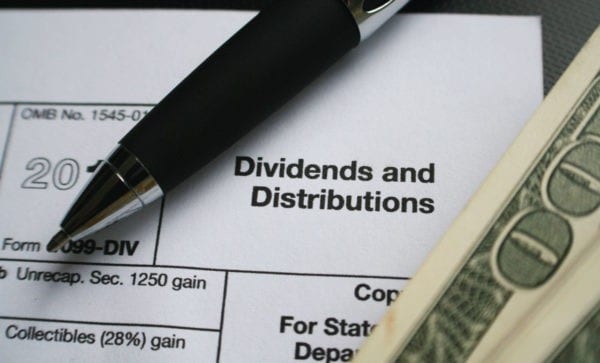In the excitement of writing a business plan and making your limited liability company (LLC) official by filing the right paperwork with the state, it’s easy to lose track of a small but important detail: how you’re going to get paid.
Obviously, making money was at least a part of your motivation for starting a business. The question is, how do you pay yourself from an LLC the right way, without accidentally breaching any business regulations or tax laws?
What to Consider When Deciding How to Pay Yourself From an LLC

Paying yourself from an LLC is a little more complicated than managing your compensation through a different business structure, in part because LLCs are so flexible. As a business owner, you have options for paying yourself, but which options are available depend on factors like how many LLC members are part of your business and how your LLC is taxed.
An owner’s draw, a salary, earned income as an independent contractor, and compensation in the form of dividends or distributions are all potential ways you can take a cut of your business’s profits. The best way for you depends on circumstances unique to your business.
How Income Tax Affects How You Pay Yourself
It’s just about impossible to have a conversation about paying yourself from an LLC without mentioning how income tax fits in. That’s because income tax and how you pay yourself from an LLC are interrelated in a couple of ways:
- You need to determine how your LLC will be taxed to make a decision about how you’re going to pay yourself.
- You need to pay income taxes and potentially self-employment taxes on the money you will be paid from your LLC, and how you choose to pay yourself can affect your tax burden at the end of the year.
Taxes aren’t the only consideration when it comes to choosing the best way to pay yourself from your LLC’s profits. You also want to consider other factors, including:
- Simplicity: how easy it is to pay yourself and how much time and hassle the process takes
- Liability protection, or whether the way you go about paying yourself could undermine the legal distinction between you and your company.
However, taxes are among the main factors that affect your decision on how to pay yourself. In different situations, you could save a lot of money by choosing the option that would most reduce your tax rate.
The Options for Paying Yourself From an LLC

Generally, you could pay yourself from your LLC in one of four possible ways:
- An owner’s draw
- A salary
- Earned income as an independent contractor
- Dividends or distributions
Paying Yourself With an Owner’s Draw
As the owner (or one of the owners) of your small business, you’re entitled to at least some of the LLC’s assets: the ones you contribute to the company and your share of the LLC’s profits. One way a business owner can pay themselves from their LLC is by making an owner’s draw.
You can withdraw an amount up to the limit of your owner’s equity, or the total assets to which you are entitled based on your contributions to the business and your percentage of its earnings. Unlike a salary, an owner’s draw doesn’t have to be determined in advance, paid on a regular basis, or accounted for by work hours or assignments.
You might pay your LLC’s employees a set salary agreed upon when they were hired and issue paychecks twice a month. However, if you take an owner’s draw, you could pay yourself whatever amount you deem appropriate whenever you choose to do so.
Paying Yourself With a Salary

The income earned by employees is called a salary. As a business owner, you can choose to pay yourself from your LLC with a regular salary, but only if you classify yourself as an employee of your company.
When you pay yourself a salary, you have to determine how much money you personally intend to make from your business and split it over regular pay periods. Of course, as the business owner, you could certainly choose to give yourself a raise or, alternatively, take a pay cut if profits are down. Overall, though, you don’t have as much flexibility with how much you pay yourself when you’re a salaried employee.
Aside from actually putting yourself on payroll, the hardest part about paying yourself with a salary is deciding how much to pay yourself. Naturally, a higher salary is preferable to a lower one, but there are other factors to consider. Your small business can’t afford to pay you so much that its sustainability is compromised.
Further, although you’re the business owner, you can’t just pay yourself any amount you want. The IRS expects earners who pay themselves to limit their payments to “reasonable compensation.” What exactly constitutes a reasonable salary is open to interpretation, but if you fail to keep your salary reasonable, you could face audits and other tax consequences.
Paying Yourself as an Independent Contractor
A less common option is to pay yourself as an independent contractor for services performed for the LLC. An independent contractor performs work for a business without being part of that business.
You might choose to pay yourself as an independent contractor if you have a set of skills that you use to advance your business but that aren’t a core part of your business. For example, suppose you run a retail store but also have marketing expertise.
You might put these marketing skills to work in the service of your LLC, but not on the kind of regular or frequent basis that would warrant a traditional employment relationship. Instead, your LLC might hire you as an independent contractor on a project-by-project basis.
If you paid yourself as an independent contractor, you would submit an invoice to your LLC (usually as a sole proprietorship or another LLC) for the work performed. You would also have to file IRS Form W-9 with the LLC. The LLC, which is essentially your client, which would pay you via check, direct deposit, or another form of payment.
At tax time, the LLC would send you a form called a 1099 that reports all of the money the business paid to you for that tax year. You would have to pay taxes on that income, including self-employment taxes, since you were not on the company’s payroll. However, the LLC would save money by not having to pay payroll taxes for you.
Paying Yourself in Dividends or Distributions

An owner may collect a salary from their LLC, but they are still entitled to a share of the company’s profits. Getting this compensation may mean paying yourself dividends or distributions.
Generally, dividends and distributions both refer to a percentage of a corporation’s profits paid to owners or shareholders. Although an LLC is not a corporation, technically speaking, it can elect to be considered a corporation for tax purposes. If your LLC is taxed as a C Corporation, this payment is referred to as “dividends.” If the IRS views your LLC as an S Corporation for tax purposes, the term “distributions” is used instead.
Figuring out how to balance the amount of money awarded to you as earned income—in the form of a salary—with compensation paid as dividends or distributions can be tricky. It matters because you (the employee) and your LLC (the employer) both contribute to Social Security and Medicare taxes on your salary, but not on dividends or distributions.
Take too much of your money from your LLC as a salary, and you’ll wind up paying more in taxes than necessary. Categorize too much of this income as dividends or distributions rather than part of your salary, and the IRS may come after you for paying less in payroll taxes than you should. Figuring out the right balance between salary and dividends is critical, and you may require professional assistance.
How to Pay Yourself in a Single-Member LLC

A limited liability company is a type of business that can have one owner or many owners. One of the benefits of an LLC is that it can be taxed as a pass-through entity. In other words, instead of paying corporate taxes on your business, you would pay income tax on its earnings as part of your personal tax return.
Single-member LLCs are like sole proprietorships, but the difference is that they offer the liability protection of establishing your company as its own entity that is legally separate from you.
Generally, the IRS recognizes single-member LLCs as one of two types of business entities for tax structure purposes.
- A “disregarded entity”
- A corporation
The type of entity your small business is taxed as determines the options available to you for paying yourself from your LLC’s profits.
Paying Yourself If Your LLC Is a Disregarded Entity
“Disregarded entity” is the default categorization the IRS gives to single-member LLCs.
If your business is taxed as a disregarded entity, the IRS acknowledges it as a separate entity but requires the owner to include the LLC’s profits as part of their personal tax return. You would, generally, be expected to file the appropriate version of the IRS Form 1040 or 1040-SR, otherwise known as the Profit or Loss from Business form.
How a Disregarded Entity Is Like a Sole Proprietorship
The IRS essentially treats a single-member LLC that is considered a disregarded entity in the same way as a sole proprietorship in terms of reporting income for tax purposes.
Generally, this means you don’t have to “pay yourself” in any official sense, at least as far as the IRS is concerned. When your LLC is taxed as a disregarded entity, the money your business makes is yours.
The Pros and Cons of Paying Yourself From a Disregarded Entity LLC

The advantage of being able to pay yourself like a sole proprietor is the simplicity. You don’t have to worry about payroll processing, as you would if you took a salary. There are, however, a couple of disadvantages of a single-member LLC paying its owner as if they were a sole proprietor.
The Need to Pay Self-Employment Taxes
First of all, you’re going to need to pay self-employment taxes. Self-employment taxes refer to the Social Security and Medicare taxes that self-employed individuals have to pay.
While employees also pay into Social Security and Medicare, they only pay half of this burden—6.2% of their salary for Social Security and 1.45% for Medicare—themselves. Their employers pay the other half.
When your LLC is taxed as a disregarded entity and you’re essentially treated as a sole proprietor for tax purposes, you’re responsible for paying the entire 12.4% of your income (up to the designated wage base limit) toward Social Security and 2.9% of your income toward Medicare.
Ultimately, the tax situation is a tradeoff. While you have to pay self-employment tax when your LLC is taxed as a pass-through entity, you avoid being double-taxed by having to pay both corporate taxes on your LLC’s profits and personal income taxes on your own earned income. If you chose to be taxed as a corporation instead of a disregarded entity, the opposite would be true.
Depending on your unique circumstances, one tax status may provide significant savings over the other. You can work with a tax professional or tax law attorney to crunch the numbers to figure out whether you’re better off paying self-employment taxes or being double-taxed as a corporation.
The Diminished Distinction Between Owner and LLC
The second disadvantage of your LLC being taxed as a disregarded entity is that it can blur the line between your income and your company’s profitability.
Suppose you need to take out a business loan or seek out investment capital to grow your business. Lenders and investors are going to want to see evidence that the business itself is profitable. That’s hard to show if you treat your business account as your personal ATM, even though you’re legally entitled to all of the money your single-member LLC earns.
How an Owner’s Draw Works for LLCs
Luckily, small business owners can easily avoid this problem with the right planning and documentation. The best way to pay yourself from a single-member LLC that is taxed as a disregarded entity is to take what’s called an “owner’s draw.”
Essentially, you can take from your LLC’s profits whatever amount of money you find appropriate, whenever you need or want to, but you need to leave a paper trail by thoroughly documenting your draws.
Because you’re already paying taxes on the full amount of your LLC’s income through pass-through taxation, you won’t pay extra income tax on the money you take as an owner’s draw (although it will be subject to self-employment taxes).
When taking an owner’s draw, you also want to keep in mind the concept of owner’s equity, or the value or revenue you have remaining in your business.
Taking out too much of your LLC’s profits in owner’s draws can send your owner’s equity plummeting and leave your business without the funds it needs to keep operating. Then you will have to rescue it by contributing your own funds or securing a loan (which may be difficult to get if all of your profits have been going straight from your business bank account to your personal account).
Here’s the bottom line: make your owner’s draws judiciously and keep detailed documentation of both the money you put into your business and the money you take out, even when you’re the sole business owner.
Paying Yourself From an LLC Taxed as a Corporation

If you choose to be taxed as a corporation, you could file IRS Form 8832 to do so. Whether you file as a C Corporation or an S Corporation, changing to a corporate tax status switches you from compensation in the form of an owner’s draw to earned income as a salaried employee. It also changes how the income you personally receive from your LLC is taxed.
For you personally, the tax burden is lower when you’re a salaried employee of your own company. Instead of paying the self-employment taxes you’re required to pay on an owner’s draw, you only pay the employee’s half of your Social Security and Medicare contributions—and, of course, the regular amount of personal income tax you would pay.
On the other hand, your LLC is likely to pay more when taxed as a corporation. Only LLCs that have a corporation tax status are required to file a separate set of corporate taxes. This leads to the LLC’s earnings being double-taxed, first as corporate income and then as personal income tax on your salary. Further, the LLC has to pay payroll taxes if you’re an employee rather than classified as self-employed.
How to Pay Yourself in a Multi-Member LLC

When you’re one of the owners of a multi-member LLC, your options for paying yourself are a little different. The IRS automatically taxes multi-member LLCs as partnerships, rather than disregarded entities, unless the members opt to have the company taxed as a corporation by filing IRS Form 8832.
If you and your fellow business owners choose to seek corporation status for your multi-member LLC, the process of paying yourself will be the same as that for a single-member LLC. Your company would hire you as an employee and pay you a reasonable salary, as determined by you and your fellow business owners. Both you and your LLC would pay half of the payroll taxes. Your company may also pay you additional compensation in the form of dividends or distributions.
What about LLCs that aren’t taxed as corporations? Multi-member LLCs taxed as partnerships combine elements of pass-through tax entities with the percentage-based shares found in corporations.
Paying Yourself If Your LLC Is Taxed as a Partnership
When an LLC is taxed as a partnership, how you pay yourself has more in common with a disregarded entity single-member LLC than a multi-member LLC taxed as a corporation. Rather than an employee earning a salary, you would essentially take an owner’s draw—but in this case, you’re not the only owner.
The amount of equity you have to draw from, as one of multiple LLC members, is limited to the money you put into the company and your percentage of the LLC’s profits. If the company has suffered losses, those losses can also decrease the amount of equity you have in the company.
When your LLC is taxed as a partnership, it’s considered a pass-through entity, which means the company passes on its tax burden to its members instead of paying corporate taxes.
The LLC would file IRS Form 1065, U.S. Return of Partnership Income, to let the IRS know how much the business made. Then you would receive a Schedule K-1 Form that reports the share of the LLC’s income to which you are entitled (and on which you’ll have to pay your self-employment taxes).
What to Remember When Filing Your Tax Return

However you end up paying yourself, the reality is that your tax situation will be a little more complicated than the average taxpayer’s. Make sure you don’t file your income taxes until you have all of your forms and documents.
If you’re not sure what IRS forms you need, it’s a good idea to reach out to a tax professional or tax law attorney prior to submitting your tax return to the IRS so you can avoid making any mistakes.
Conclusion

Different methods of paying yourself—not to mention establishing your LLC’s income tax status—work best for different business owners. Now that you understand how owner’s draws, payment by salary, dividends and distributions, and other means of paying yourself from an LLC work, you can take a closer look at what your tax obligations would look like under different LLC tax statuses.
Then you can make an informed decision that works for you and your company.
LLC Resources
How to Start an LLC in California
How to Start an LLC in Florida
How to Start an LLC in Texas
How to Start an LLC in New York

